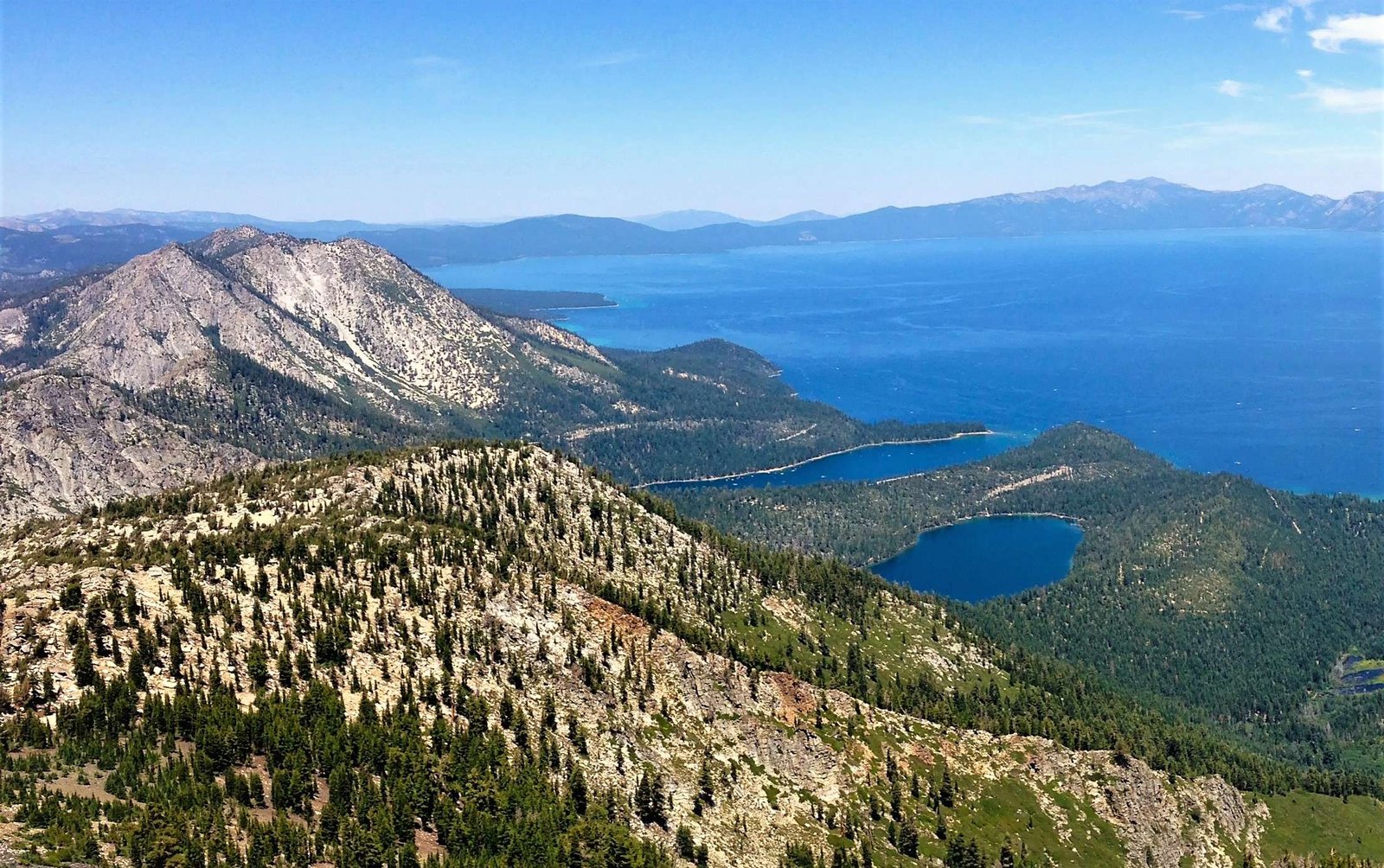Lake Tahoe’s rock formations are a testament to millions of years of geological processes. The basin is predominantly characterized by granite, shaped by tectonic and glacial activities. Other rock types include metamorphic and volcanic rocks, as well as glacial deposits. These formations offer visitors a unique glimpse into Earth’s history, with accessible sites showcasing various geological features.
What are the Main Types of Rock Formations in Lake Tahoe?

Lake Tahoe’s geological landscape is diverse and fascinating, featuring several types of rock formations:
- Granite Formations
- Metamorphic Rocks
- Volcanic Rocks
- Glacial Deposits
Granite Formations
Granite is the predominant rock type in the Lake Tahoe area. It’s characterized by:
- Mineral Composition: Quartz, feldspar, biotite, and hornblende
- Appearance: Light-colored grains (quartz/feldspar) mixed with darker grains (biotite/hornblende)
- Formation Process: Intrusion of younger granite into older, solidified granite
Metamorphic Rocks
The Tuttle Lake Formation is a notable metamorphic rock formation in the area, consisting of:
- Lava flows
- Other metamorphic rocks from the Late and Middle Jurassic periods
Volcanic Rocks
Volcanic activity played a crucial role in shaping Lake Tahoe’s landscape. Key volcanic formations include:
- Tahoe City basalt
- Olivine latite flows (1.68 to 2.4 million years old)
Glacial Deposits
Evidence of glacial activity is abundant in Lake Tahoe, including:
- Moraines
- Outwash deposits
- Bouldery till
- Large granitic boulders
- Unconsolidated boulder, cobble, gravel, sand, and silt
Where Can Visitors See These Rock Formations?

Lake Tahoe offers numerous accessible locations to view its diverse rock formations:
- Granite Formations:
- Cascade Canyon
-
Emerald Bay
-
Volcanic Rocks:
- Cave Rock
-
Shakespeare Point
-
Glacial Deposits:
- Fallen Leaf Lake
- Emerald Bay
- Meeks Bay
Most of these sites are accessible via hiking trails or scenic drives, with parking facilities and amenities available nearby.
What Safety Precautions Should Visitors Take When Exploring Rock Formations?
When exploring Lake Tahoe’s rock formations, visitors should keep the following safety measures in mind:
- Wear appropriate hiking gear (sturdy shoes, layered clothing)
- Bring necessary supplies (water, snacks, first aid kit)
- Stay on designated trails
- Be aware of changing weather conditions
- Watch for potential hazards like rockfall and slippery surfaces
When is the Best Time to Visit Lake Tahoe’s Rock Formations?
The ideal time to visit Lake Tahoe’s rock formations depends on your preferences:
- Spring and Summer: Stable weather, clear trails
- Winter: Good for winter activities, but requires extra precautions due to snow and ice
Are There Guided Tours Available for Lake Tahoe’s Rock Formations?
Yes, several guided tour options are available for those interested in exploring Lake Tahoe’s rock formations:
- U.S. Forest Service Tours:
- Range from short hikes to multi-day expeditions
-
Focus on geological features and history
-
Local Tour Operators:
- Offer various tour lengths and difficulty levels
-
Provide in-depth information about the area’s geology
-
Tahoe Institute for Natural Science:
- Conducts workshops and guided tours
- Emphasizes mineral composition and geological history
What Educational Programs are Available for Learning About Lake Tahoe’s Rock Formations?
Several organizations offer educational programs focused on Lake Tahoe’s geology:
- U.S. Forest Service Programs:
- Educational hikes
-
Informational sessions about the basin’s geological features
-
Tahoe Institute for Natural Science Workshops:
- In-depth exploration of mineral composition
-
Discussion of the area’s geological history
-
Local Events:
- Tahoe City Solstice Festival often includes geology-focused activities
- Lake Tahoe Basin Management Unit offers seasonal educational programs
These programs provide visitors with a deeper understanding of Lake Tahoe’s unique geological landscape, from its granite foundations to its glacial history.
How Have Lake Tahoe’s Rock Formations Influenced the Local Ecosystem?
Lake Tahoe’s rock formations have significantly shaped the local ecosystem:
- Soil Composition: The breakdown of granite and other rocks influences soil type and fertility
- Water Chemistry: Rock types affect the lake’s water composition and clarity
- Plant Life: Different rock formations support varied plant communities
- Wildlife Habitats: Rock formations create diverse habitats for local fauna
Understanding these geological influences helps in appreciating the delicate balance of Lake Tahoe’s ecosystem.
Lake Tahoe’s rock formations offer a fascinating glimpse into Earth’s geological history. From towering granite cliffs to ancient volcanic remnants, these formations tell a story millions of years in the making. Whether you’re a geology enthusiast or simply appreciate natural beauty, exploring Lake Tahoe’s diverse rock formations promises an unforgettable experience.
References:
1. https://www.gotahoenorth.com/lake-tahoe/history-and-facts/lake-tahoe-geology/
2. https://www.conservation.ca.gov/cgs/Documents/Publications/Regional-Geologic-Maps/RGM_004/RGM_004_TahoeBasin_2005_Pamphlet.pdf
3. https://thebackpackguide.com/how-was-lake-tahoe-formed-part-1

